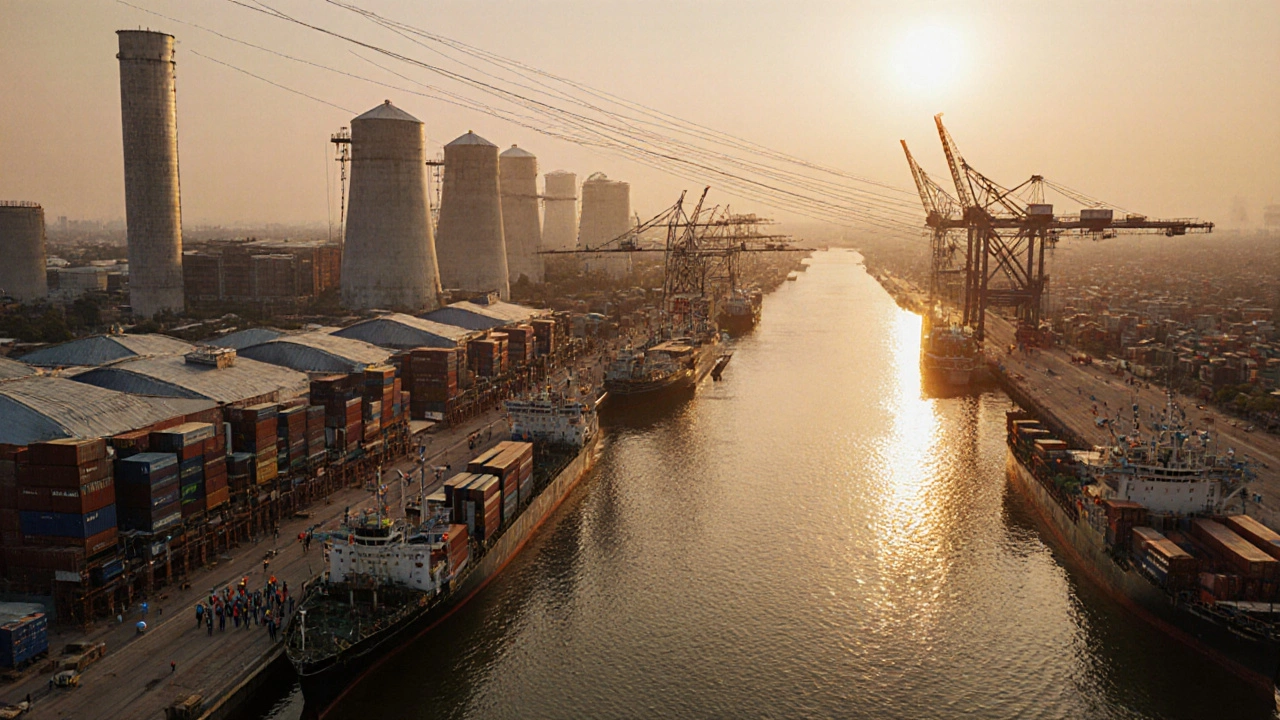- Asia's Largest Earth Moving Equipment Manufacturer: The Big Player in India May 7, 2025
- Discovering India's Strongest Wood for Durable Furniture Mar 23, 2025
- Steel Production: Which US City Takes the Crown? Jun 12, 2025
- Pittsburgh: The Steel Making Capital of the US – History, Facts & Impact Jul 14, 2025
- Furniture Import Costs from India: What You Really Pay Jun 18, 2025
Textile Export India – What You Need to Know to Succeed
If you’re thinking about sending Indian fabrics abroad, you’ve come to the right place. India makes a lot of cloth – from cotton tees to silk sarees – and buyers worldwide are looking for quality at a fair price. This guide breaks down the hottest fabrics, where they sell best, and the simple steps you can take right now to start or grow your export operation.
Major Indian Textiles That Buyers Want
First off, let’s talk about the products that actually move. Cotton is still king. Indian cotton is praised for its softness and breathability, making it a staple for t‑shirts, denim, and home‑textiles. If you have a reliable source of Ginning‑grade cotton, you’re already in a strong position.
Silk is the luxury player. Mysore silk and Banarasi brocades fetch premium prices in Europe and the US because of the hand‑loom heritage behind them. Even though production costs are higher, the margin can be worth it if you target niche boutiques or designers.
Another fast‑growing segment is technical textiles – fabrics treated for water resistance, flame retardancy, or medical use. Companies in Gujarat and Tamil Nadu are already supplying these to the automotive and healthcare sectors abroad. If you can partner with a lab that does the finishing, you open doors to higher‑value contracts.
Don’t forget about sustainable fabrics. Organic cotton, bamboo blends, and recycled polyester are getting big buzz. Many European retailers have sustainability clauses, so a certification can turn a simple order into a repeat partnership.
Top Export Destinations and Market Trends
The United States remains the biggest buyer of Indian garments, especially casual wear and denim. Europe follows closely, with a strong appetite for high‑end silk and sustainable fabrics. The Middle East is a hotspot for home‑textiles like towels and curtains, thanks of course to cultural ties and demand for premium quality.
One trend to watch is the rise of e‑commerce platforms that curate Indian fabrics for global shoppers. Brands like Ethnic World and FabFit are sourcing directly from small‑scale producers and selling through their own sites. Getting listed on such platforms can give you exposure without a huge marketing budget.
Seasonality matters too. European buyers look for lightweight cotton in spring/summer and silk in winter. Plan your production calendar so you can ship at the right time – missing a season often means losing the order.
How to Navigate the Export Process Quickly
Step 1: Get the right paperwork. You’ll need an IEC (Import Export Code) from the DGFT, a GST registration, and a certificate of origin for most markets. Most states have one‑stop centers that help you sort these in a day.
Step 2: Choose the right shipping method. For bulk orders, a full‑container load (FCL) through a port like Nhava Sheva is cost‑effective. Smaller orders can go by air freight, but keep an eye on the cost‑to‑price ratio – a thin margin can disappear fast.
Step 3: Work with a freight forwarder who knows the destination’s customs rules. If you’re new to the US market, ask the forwarder about FDA regulations for textile labeling and any anti‑dumping duties that might apply.
Step 4: Price smartly. Include raw material cost, processing, packaging, freight, insurance, and a buffer for customs duties. Run the numbers against the buyer’s target price – if the gap is too wide, consider value‑added services like branding or custom designs to justify a higher price.
Step 5: Build relationships. Follow up after delivery, ask for feedback, and offer a small discount on the next order if they place it within three months. In export, trust beats a one‑off low price every time.
Exporting Indian textiles isn’t a mystery. Focus on the fabrics that have global demand, know where the buyers are, and keep your paperwork and logistics sharp. With these basics in place, you can turn a local loom into a worldwide brand.
Surat: India's Top Textile City - Which City Leads the Industry?
- Aarav Sekhar
- Oct 2, 2025
Surat reigns as India's biggest textile hub, outpacing Ahmedabad, Coimbatore and Tirupur in turnover, employment and exports. Learn why the city leads and what challenges lie ahead.
